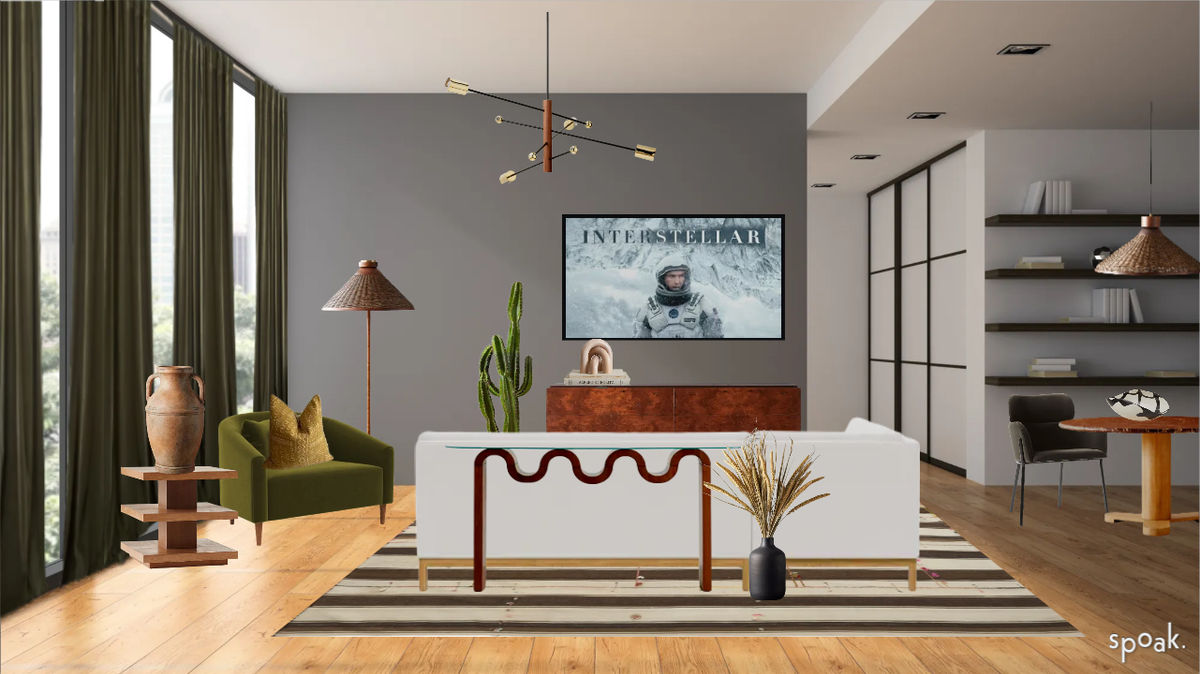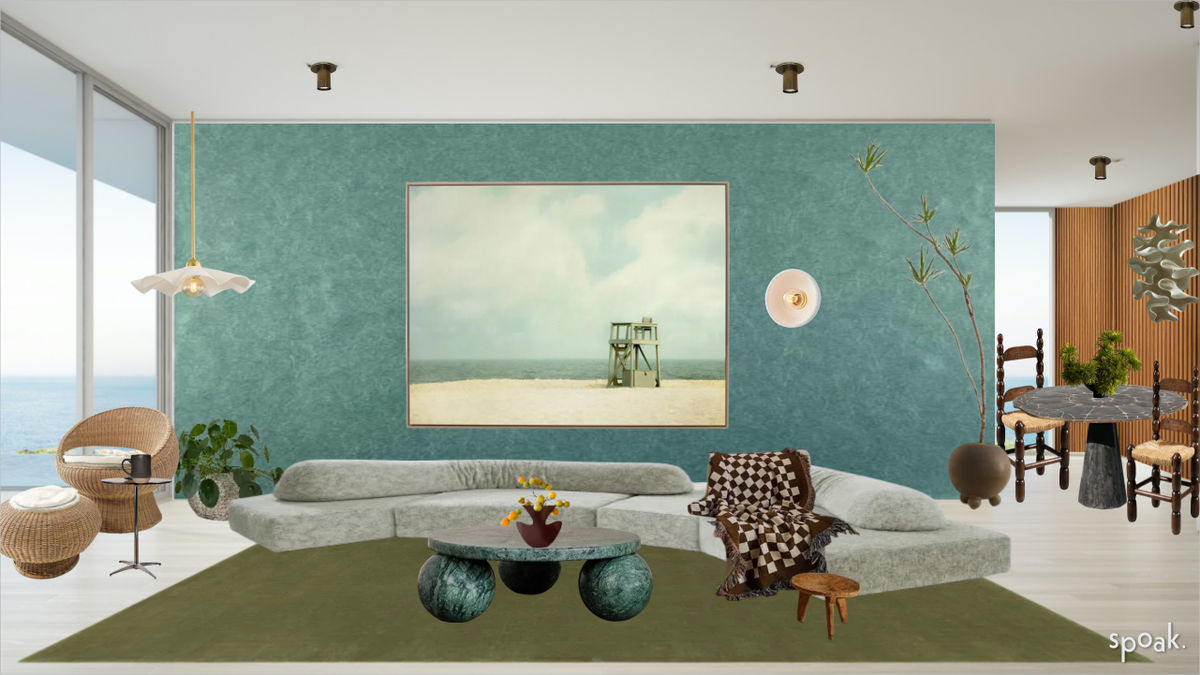


Top things to know about applying spatial planning in your home design:
In this post about the basics of spatial planning, we talked about the different questions you can ask to help you get started with some spatial planning fun. Some of you might not think of spatial planning as fun (you’ll change your mind… just wait), but having a well-designed space is about much more than making it look pretty! You want the result to function for you. Often, if you love the way your space looks but something feels “off,” or you find yourself not engaging with your space in the way you want to, it could be that the spatial plan needs to be revisited. Spatial planning is a big complex topic, and there’s a big difference between addressing this during a gut renovation or making some changes to your existing space. For the sake of this article, I’ll continue talking about how to make changes to your home if you’re not starting from a blank slate.
In part one, we asked ourselves questions about how we wanted the space to feel and function. With the answers to these questions in mind, what’s next? How do you actually take that information and apply it?




If you don’t already have a floor plan of your space, you will need to draw one. It doesn’t need to be perfectly to scale (although that helps), but having a visual to play around with makes a big difference during the next few steps. Use an intuitive floor planner tool to make it even easier!
Unless your room is oddly shaped or you have a lot of architectural features you’re working with, there’s often a layout you’ll default to because it just seems to make sense. For the sake of this exercise, forget what you know! Even if you like the way your room is currently laid out, try to erase it from your brain. I saw photos of how two previous tenants had laid out the living room in my current apartment, and they were exactly the same. During the chaos of move-in day, I put the sofa in the exact same space as the previous tenants. But after a few months in the space, I found myself wishing I had given it a bit more thought.

Humor me here: Even if it makes no sense, play around with every possible place you could put your biggest piece of furniture. If you’re doing this in your living room, then it’s probably your sofa. Short of placing your sofa two inches away from a wall, you should include some ridiculous options in this step. Sofa floating in the middle of the room? Sofa pushed up a built-in bookcase? Sofa blocking off your windows? Sofa (gasp!) not directly across a wall where your TV may live? Try them all out.
Okay, so maybe having your sofa block the entrance to your living room isn’t the best option. But trying every possible combination (no matter how insane) helps you ensure you’re not overlooking something that could work really well. During this step, cross out the options that would make your friends and family concerned for your sanity.

Once you have some options for where your most prominent piece of furniture could go, start layering some other large elements. You don’t have to go overboard here, but start with the basics to give these layouts some structure. As you add more furniture, you may find that you want to adjust some of the layouts and eliminate others.
Now that you have some very basic options for how the space could be laid out, make sure you consider the function and feel that you identified in this post. Do any of these layouts work particularly well for the feeling you want in the space? For example, maybe having your sofa facing the open kitchen helps you achieve the community vibe you’re going for (like when you host dinner parties and you’re still finishing up in the kitchen while your friends sip on wine). Or maybe having your sofa facing the windows serves as a reminder to enjoy the view instead of looking at a screen.

At this point, you’ve probably narrowed down your layout to one or maybe even two options. All you can do at this stage is go for it! Rearranging your furniture and playing around with the way a room is laid out can totally change the feel of a space, and it’s also the easiest thing to change. Sure it may involve getting very sweaty… but it’s a cheap fix, and you can always move your furniture back!

Top things to know about applying spatial planning in your home design:
In this post about the basics of spatial planning, we talked about the different questions you can ask to help you get started with some spatial planning fun. Some of you might not think of spatial planning as fun (you’ll change your mind… just wait), but having a well-designed space is about much more than making it look pretty! You want the result to function for you. Often, if you love the way your space looks but something feels “off,” or you find yourself not engaging with your space in the way you want to, it could be that the spatial plan needs to be revisited. Spatial planning is a big complex topic, and there’s a big difference between addressing this during a gut renovation or making some changes to your existing space. For the sake of this article, I’ll continue talking about how to make changes to your home if you’re not starting from a blank slate.
In part one, we asked ourselves questions about how we wanted the space to feel and function. With the answers to these questions in mind, what’s next? How do you actually take that information and apply it?




If you don’t already have a floor plan of your space, you will need to draw one. It doesn’t need to be perfectly to scale (although that helps), but having a visual to play around with makes a big difference during the next few steps. Use an intuitive floor planner tool to make it even easier!
Unless your room is oddly shaped or you have a lot of architectural features you’re working with, there’s often a layout you’ll default to because it just seems to make sense. For the sake of this exercise, forget what you know! Even if you like the way your room is currently laid out, try to erase it from your brain. I saw photos of how two previous tenants had laid out the living room in my current apartment, and they were exactly the same. During the chaos of move-in day, I put the sofa in the exact same space as the previous tenants. But after a few months in the space, I found myself wishing I had given it a bit more thought.

Humor me here: Even if it makes no sense, play around with every possible place you could put your biggest piece of furniture. If you’re doing this in your living room, then it’s probably your sofa. Short of placing your sofa two inches away from a wall, you should include some ridiculous options in this step. Sofa floating in the middle of the room? Sofa pushed up a built-in bookcase? Sofa blocking off your windows? Sofa (gasp!) not directly across a wall where your TV may live? Try them all out.
Okay, so maybe having your sofa block the entrance to your living room isn’t the best option. But trying every possible combination (no matter how insane) helps you ensure you’re not overlooking something that could work really well. During this step, cross out the options that would make your friends and family concerned for your sanity.

Once you have some options for where your most prominent piece of furniture could go, start layering some other large elements. You don’t have to go overboard here, but start with the basics to give these layouts some structure. As you add more furniture, you may find that you want to adjust some of the layouts and eliminate others.
Now that you have some very basic options for how the space could be laid out, make sure you consider the function and feel that you identified in this post. Do any of these layouts work particularly well for the feeling you want in the space? For example, maybe having your sofa facing the open kitchen helps you achieve the community vibe you’re going for (like when you host dinner parties and you’re still finishing up in the kitchen while your friends sip on wine). Or maybe having your sofa facing the windows serves as a reminder to enjoy the view instead of looking at a screen.

At this point, you’ve probably narrowed down your layout to one or maybe even two options. All you can do at this stage is go for it! Rearranging your furniture and playing around with the way a room is laid out can totally change the feel of a space, and it’s also the easiest thing to change. Sure it may involve getting very sweaty… but it’s a cheap fix, and you can always move your furniture back!

We are an online interior design studio for enthusiasts and professionals. Get a real-world design education, easy-to-use tools, job opportunities, and a tight-knit community. All levels welcome.
Join now